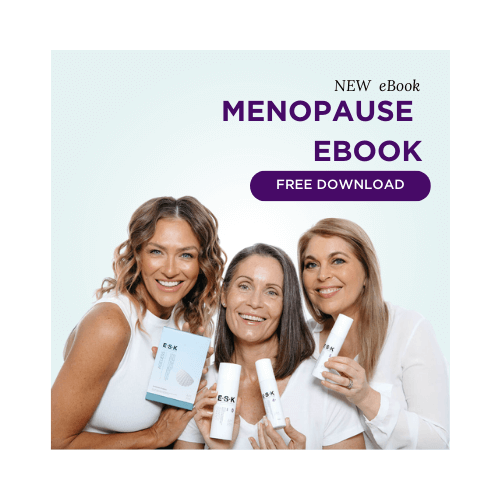
The ESK blog
The Ins and Outs of Micro-needling
08 September 2021
Dr Ginni Mansberg
The thought of using something to purposefully puncture the skin is a little bizarre. But starting in 1995 plastic surgeons were beginning to see the benefits of doing just that (using tattoo guns with no ink) for scar healing. Since then, the practice of puncturing the skin with many tiny needles has been studied and shown to have benefits for;
– Skin tightening
– Reducing wrinkles and fine lines (both of these by increasing collagen)
– Reducing hyperpigmentation
– Reducing acne (but should never be performed on skin with active acne)
– Encouraging hair growth (managing alopecia)
– Delivery of drugs and skin care ingredients; and of course
– Reducing scars
And the biggest benefit is that recovery is essentially immediate, it is generally well tolerated and there are far fewer risks than most alternatives. It’s also quite a bit cheaper than most other in-clinic procedures.
SO WHAT IS MICRO-NEEDLING?
Micro-needling is a process where many small needles are used to prick the skin. This is usually done either using either a rolling device with needles, or an electric device which “stamps” needles on to the skin.
The procedure is usually done in a clinic (with a light anaesthetic applied to the skin). A needling tool is used to create tiny punctures in the skin which commonly results in pin-point bleeding in the areas treated. The length of the needle used depends on the desired outcome of the treatment and also affects both the recovery time and time between treatments. The shortest needles (0.1mm) help improve penetration of skin care and are painless. At 0.5mm there are documented benefits of collagen increases. And a depth of 1.5mm is used for reducing scars. A few treatments (about 4) are usually needed with gaps of between 3 to 8 weeks. Results usually take between 3 and 6 months to start showing.
Experts recommend never using micro-needling on skin with active herpes, warts or any other form of infection or skin diseases (eg. Eczema or Psoriasis).
MICRO-NEEDLING AT HOME
Micro-needling can be done at home and while you can get needle depths up to 2mm quite easily on-line, the recommendation is to only use short needles. Needle lengths of less than 0.5mm are usually painless and the maximum recommended length of needles for home use is 0.15mm. At this needle depth there is some evidence for improved drug delivery (including skincare), reduced pore size, fine lines and control of oil production, but not for aging skin, hyperpigmentation or scarring.
HOW DOES IT WORK
There is some debate about how the pin pricks end in collagen growth and reduced pigmentation, but at its core once the skin experiences these small injuries a healing process is triggered. That results in the release of growth factors which in turn stimulates the growth of new skin. It also triggers new fibroblasts and collagen, which are some of the core scaffolding elements in the skin giving it depth, elasticity and firmness.
WHAT ARE THE DOWNSIDES
If done in a clinic, downsides are pretty rare. The skin is usually a little red and sensitive for a few hours after the treatment but in some cases that can last up to 3 days. Due to the use of an anesthetic, most users experience discomfort (but not pain). The skin is also more sensitive to the sun for about a week. More serious downsides are limited and very rare, but include hyperpigmentation (areas of increased pigmentation), infection and reactivation of herpes. Other anecdotally reported downsides are associated with use outside of recommended guidelines (eg, using too much pressure, or micro-needling damaged skin). While anecdotally it has great benefits and limited downsides with many journal articles written about it, the evidence for micro needling, while emerging, is not “strong”. Most studies are quite small and it has not been tested against most other treatments (like laser).
Another area of concern is doing micro-needling at home. Given that micro-needling is usually recommended as an in-clinic procedure, we don’t really have quality documented evidence of its safety when used at home. Looking to “Google” to get a sense of user experience, most internet reviews are glowing, but scratch the surface and there are plenty of users who have had bad experiences. One of the possible reasons for that is that it is too easy to buy needles with depths greater than those recommended for home use and it’s actually very hard to find needles with lengths that are recommended for home use (0.2mm or less). It is also possible that users are micro-needling damaged skin, applying inappropriate skin care afterwards or using non-sterile needles.
THE BOTTOM LINE
If you are looking to step up your skincare regime, micro-needling can be a great next step. We would recommend that if you are going to do it at home, that you use needle depths of no more than the recommended 0.2mm. Anything longer than that and we would recommend going to a clinic. That said, if you want to use longer needles at home we would strongly suggest that you go the extra mile researching and following recommendations on cleanliness, sterilization, appropriate skincare use and usage restrictions and techniques.
Good luck!

